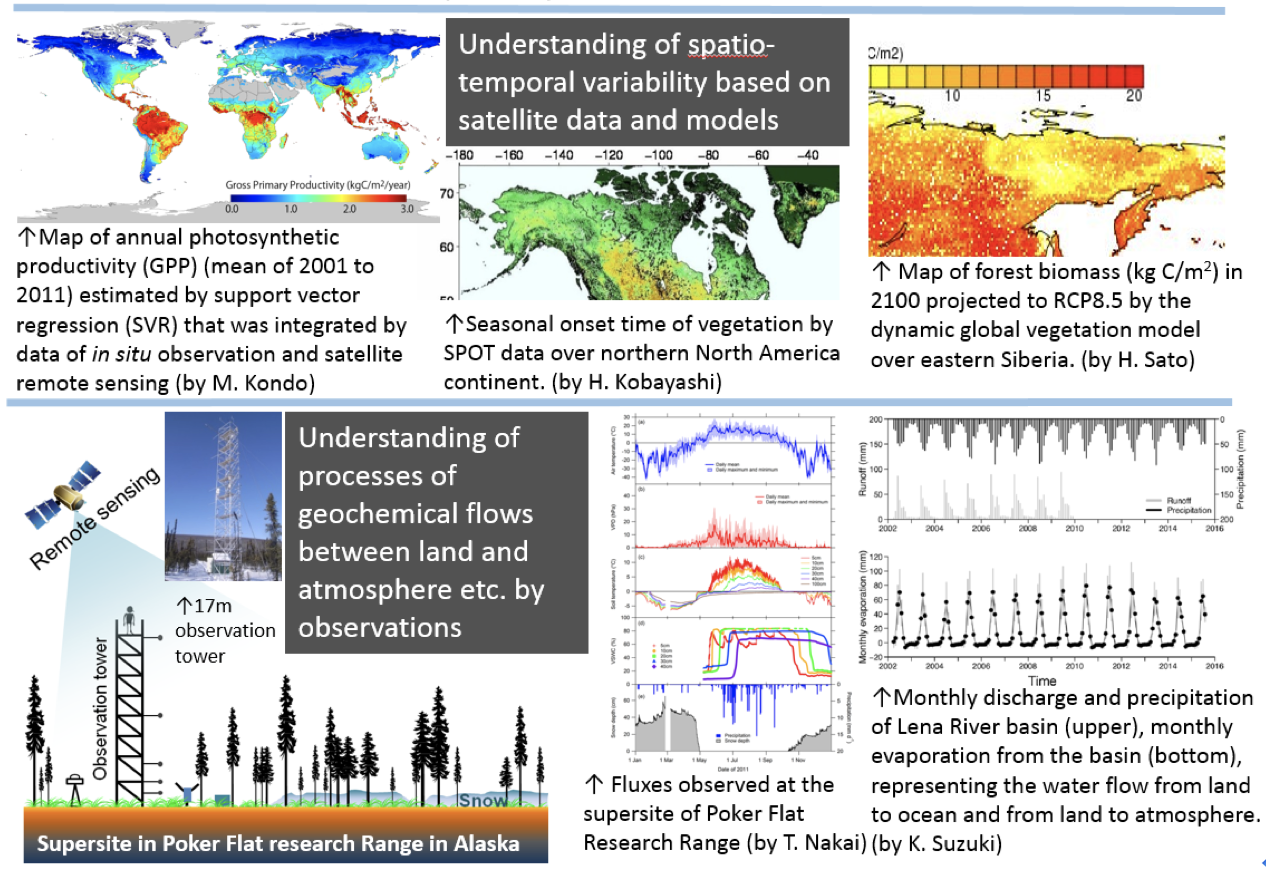Vegetation, snow, tropical forest, boreal forest, Alaska, Siberia, Thailand, Borneo, dynamic global vegetation model, land surface model, WRF, model inter-comparison, remote sensing, satellite data
Exploring functions of vegetation and snow/ice for CO2, water, and energy exchanges between land surface and atmosphere by observations and modeling
RESEARCH OUTLINE
The exchange of CO2 between land surface and atmosphere driven by photosynthesis and respiration of vegetation, that extensively covers the global land, is a dominant function for the global carbon cycle. Snow and ice that also extensively cover the global land play an important role in global climate and environmental changes. This research group conducts field surveys of vegetation and meteorological observations including snow and ice in Japan, tropical regions, and boreal regions, and investigates the role of vegetation and snow/ice in CO2, water, and energy exchanges between land surface and atmosphere. For example, we are carrying out the meteorological observation and flux observation of CO2, water, and energy by 17m tower constructed in a boreal forest near Fairbanks, Alaska, while the spatio-temporal variability of vegetation of Alaska is analyzed by using satellite remote sensing data. Also a dynamic global vegetation model that projects the vegetation change in the centennial-scale future is developed. Furthermore, reliabilities of the flux between land and atmosphere estimated by numerical models and satellite data are evaluated by comparing each other and with observed data.
